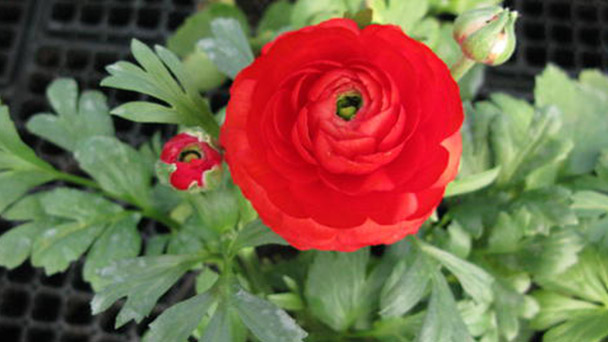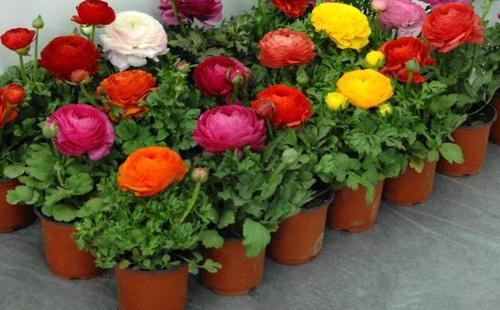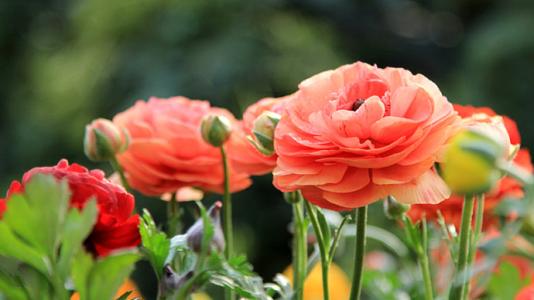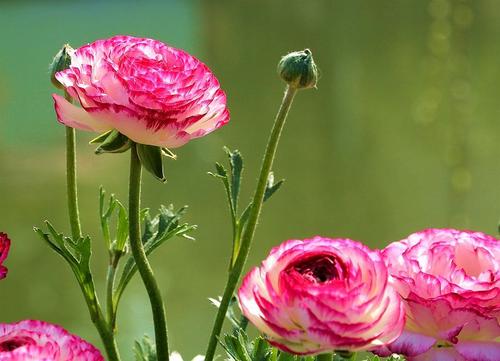Propagation methods of Persian Buttercup
Written by Maggie
Nov 03 2021

Persian Buttercup is a common flower plant in the Persian Gulf, providing high ornamental value and many breeders throughout the country. But as more people grow, there are concerns about propagation. What are propagation methods of Persian Buttercup? Below we will make up to take you to understand.

In terms of propagation of the Persian Buttercup, there are two types of propagation in the Persian Buttercup: seeding and cutting, both of which have high survival rates provided they are performed properly. As for how these two propagation methods, the following details, let's take a look.
Seed propagation method of Persian Buttercup
1. Choice of substrate and good drainage
Only in the Persian Buttercup before seeding was performed, did we select a matrix in the first few passages where only the proper matrix was available for better growth. Generally we had better choose loose fertile and good drainage of neutral or alkaline soil as the matrix.
2. Seed harvesting: in June
Typically in June, there are only dry buttercup branches in the Middle of the country where the aggregate changes from green to yellow, meaning that seeds are ripe before being picked, dried in paper bags and stored in dry, ventilated areas until autumn.
3. Accelerating bud at low temperature: 10℃-15℃
In the Persian Buttercup, the duration of germination is typically in the spring, though variations in temperature are typically between 10 ° C and 15 ° C. Typically, the fastest germination occurs in about 20 days, while in the persian buttercup there is no germination above 20 ° C.
4. Sowing method: apply base fertilizer before sowing
In Persian buttercup breeding method, seed propagation is relatively simple. First of all, it needs to be in adding a suitable amount of soil basal, then will spin off good seeds in the soil, in the soil after 1-2 cm above can be watering, watering the note a drenched. After its germination in half after the shade, we can apply regular maintenance.

Division propagation method of Persian Buttercup
Division propagation method of Persian Buttercup is typically performed in the autumn between September and October. The bulbous roots are usually separated in the autumn. After digging out, the bulbous roots of the plant and the roots of the plant are spontaneously broken into several pieces, with several flower buds and small roots left in each piece. The separate bulbs are disinfected, dried and then inverted into clean, wet sand to grow new buds. Keep the environment cool and ventilated, keep the sand moist by sprinkling water frequently, and disinfect the bulbs weekly to prevent them from rotting. After half a month, when the buds and roots are produced, they can be planted. When planting, do not bury too thick, just bury to the root of the stem, otherwise it will affect the long leaves; Also do not bury too shallow, otherwise it will affect the root. After planting, pay attention to control the amount of water, not too dry and not too wet, keep the soil moist. Wait until the seedling emerges and then slowly add water according to the growth situation.

Read Next:
Persian Buttercup (Ranunculus Flower) Grow & Care Guide
Latest Updated
- Benefits of Bugleweed - 7 Science-backed Health Benefits
- Bugleweed Dangers & Side Effects - Is It Poisonous?
- How to Plant Evergreen Trees - What You Should Know
- When to Plant Evergreens - Grow Guide for Evergreen Trees
- 12 Wonderful Evergreen Shrubs for Your Garden
- 12 Popular Evergreen Plants with Pictures for Beginners
- When And How To Prune A Lilac Bush Like a Pro
- How to Grow & Care for Lilac Vine (Hardenbergia Violacea)
- Japanese Lilac Tree (Syringa Reticulata) Care & Propagation Guide
- Shumard Oak Pros and Cons - What to Know
Popular Articles
- Winter maintenance of Antirrhinum Majus
- How to Grow Terminalia Mantaly Tree
- How to Grow and Care for Crossostephium Chinense
- How to grow Antirrhinum Majus in spring
- Peristeria Elata (Dove Orchid) Profile: Info & Care Guide
- Underwatered Snake Plant (Sansevieria Trifasciata) - Signs And How To Fix
- How to Care for Brazilian Jasmine Plant (Mandevilla Sanderi)
- How to Grow & Care for Graptopetalum Purple Delight in Summer
- Rosa Chinensis (China Rose): Plant Growing & Care Tips
- How to Care for Baby Sun Rose (Aptenia Cordifolia)